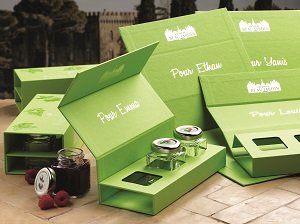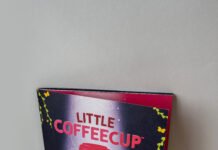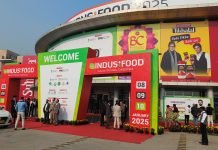Kolbus in Rahden, Germany has grown over its 243-year history to become the leading bookbinding machine manufacturer worldwide. Early 2018, the company surprised the industry by selling its gluer binders and bookline business to Müller Martini. Kai Büntemeyer, managing partner of Kolbus and chairman of VDMA Printing and Paper Technology, explains in an interview the reasons for their new and clearly defined focus on the packaging market, the practical implementation of the transfer and the challenge of convincing their staff of the benefits from their change of course. Excerpts from an interview with Kai Büntemeyer, managing partner of Kolbus.
Mr. Büntemeyer, what is left of Kolbus after its surprising sale of its gluer binders and bookline business to Müller Martini?
Kai Büntemeyer: It is not as bad as it sounds. I anticipate that the Kolbus Group turnover will fall by around 15%. We are indeed relinquishing a large part to Müller Martini, but at the same time, we are significantly expanding our components business. In 2017, we had a total turnover of more than EUR 135 million, to which component manufacturing for other manufacturers contributed EUR 12 million. Our turnover in this sector will grow because we will be supplying components to the new ‘Engineering Works Muller Martini Bookbinding Systems.’
What happens to your staff in your custom machines plant?
Kai Büntemeyer: The changeover means 253 staff members will transfer to Müller Martini and develop, manufacture and market bookbinding systems there. In the run-up to the transfer, we spun off a company with these members of staff and the appropriate patents and designs. Müller Martini then took over this company in its entirety. We plan a two-brand strategy in which our product range continues to be available and the sales and service contacts for customers remain the same. We have deliberately sold to a traditional company that plans for the long term, and not to finance investors.
Will you keep your 150 R&D staff and your 8.5% R&D quota?
Kai Büntemeyer: In relation to turnover, the R&D quota will drop because component manufacturing is growing so strongly and over half of our R&D employees will be transferring with our bookbinding systems to the new company. However, we will be clearly increasing R&D in custom machine manufacturing for the packaging sector.
Why the new strategic focus on packaging?
Kai Büntemeyer: The market for bookbinding systems is saturated and is stagnating. It has become a so-called ‘sunset industry.’ In contrast, we foresee double-digit growth rates in manufacturing custom machines for packaging, which is why in future we want to concentrate vigorously on packaging made of cardboard and paper—specifically on luxury packaging.
Can Kolbus utilize its existing know-how for this?
Kai Büntemeyer: Yes, the classic Kolbus casemaker already has the technology that will form the backbone of our new packaging range. So, our packaging technology is actually based on established technology, and in the end a book cover is also the book’s packaging. The marketing approach taken by brand manufacturers using our packaging technology is not so very different from the way a book is marketed as a hardcover book. In both scenarios, it is all about attractive, high-quality appearance and brand image.
Even if some things stay the same, does 2018 mark a new era for Kolbus?

box making equipment
Kai Büntemeyer: Yes, definitely. We will still continue the tradition of casemakers but from now on we will be venturing into new territory. There will be much that our staff will find different. In future, component manufacture will operate as an independent entity. Here we will be investing in modernizing our machines, but we also expect in return that this sector will seek out new, lucrative markets and assertively address them. And the packaging sector will feel like a start-up for the next 3-4 years. We will need to set up a product range quickly, act creatively and grow dynamically.
Will you succeed in committing your staff to this change?
Kai Büntemeyer: This is, of course, one of our greatest challenges. At first we met with a lot of scepticism, which I can understand. We are taking a lot of trouble to explain our new strategy because we need to boldly tackle this change and master it together.
How do you explain leaving the printing and paper technology sector?
Kai Büntemeyer: It isn’t that we see no future for printing and paper technology but the growth forecasts are, to put it mildly, modest. Market volume will remain huge and ensure good business in the future but I see a problem for us machine manufacturers in that the printing industry will continue to rationalize and will need to massively boost its productivity. This makes it difficult for equipment suppliers. Admittedly, the packaging market is also not a goldmine but the cost pressures are not quite so hair-raising.
Is the cost issue the greatest difference between the two markets?
Kai Büntemeyer: Customers expect more and more that our machines will reduce costs and this is something customers in the packaging sector also want. Yet around half our projects are about developing new solutions and options. The book is a product that has been perfected. In packaging, development is never finished: you always need new ideas to generate interest for your products.
Are there any points of contact for digital and analogue printing technology in packaging?
Kai Büntemeyer: We usually process high-quality printed and surface-finished substrates. Our experience in laminating cardboard with high-quality printed substrates is in great demand. A typical customer for us will be someone who also works as a printer in the packaging sector. The process chains here are still not as closely linked as in book printing although this is now changing. Procurement cycles are becoming shorter, which leads to a need for new, networked workflow solutions. A smart, Print 4.0 approach can also be just as interesting for short-term, event-related campaigns as for optimizing logistic chains.
A final question: Where do you see Kolbus in 2030?
Kai Büntemeyer: I think the custom machine manufacturer of the future will offer his customer much more application consulting and support. You can see it beginning now in packaging design and in future it will deeply impact production processes. I am convinced that for Kolbus the future lies in such in-depth consulting service business models. We will have to see whether customers will own machines or order production capacity from us. Whatever happens, we will be ready for it.
The book is a product that has been perfected. In packaging, development is never finished: you always need new ideas to generate interest for your products.












